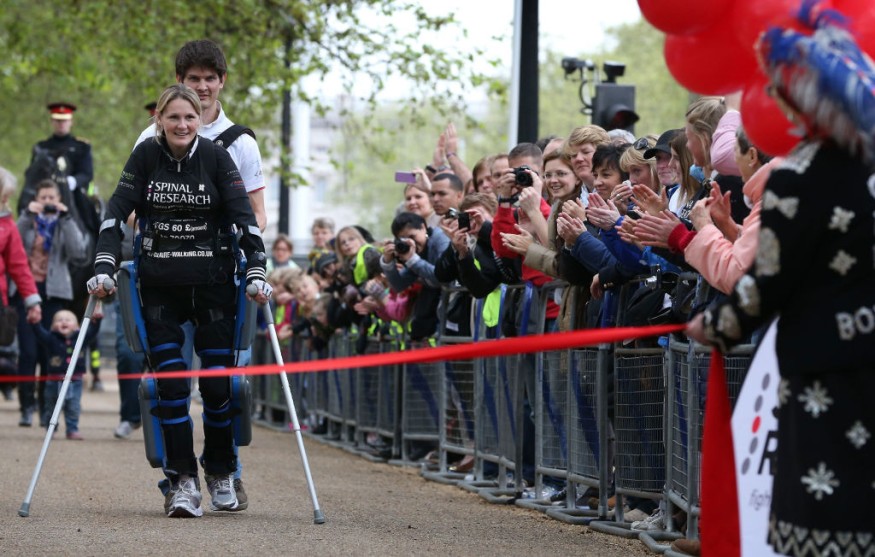Richard Neider is a U.S. Army veteran who was injured while serving in Iraq in 2005, leaving him unable to walk. The incident caused his spinal cord injury and he had been wheelchair-bound for almost 10 years.
However, thanks to a robotic exoskeleton, he can now move and walk again. The battery-powered, motorized device has sensors that detect when he shifts his weight, tells his other leg to move, and creates a walking motion.
The device is from ReWalk Robotics called ReWalk Personal 6.0 Exoskeleton granted to him through a Veterans Affairs program.
How the Battery-Powered Exoskeleton Works
ReWalk Robotics has developed the exoskeleton that works using some sensors that will detect when the user stands up and shifts in the user's center of gravity, Newsweek reported. The user just needs to lean forward to activate the battery-powered motors to move the knee and hip joints so the legs can walk naturally.
The exoskeleton supports the hip and knees of the user while a power pack is on their back. Since it is motorized, the user does not necessarily feel the weight of the power pack because everything is designed for their body and the exoskeleton helps them take the impact of the weight away.
Scientists have been developing human exoskeletons for many years that will hopefully aid paralyzed patients and increase the strength and endurance of those with strenuous jobs and for military use. Its biggest purpose expands to people with stroke and incomplete spinal cord injury.

Getting the Chance to Walk Again
"I can't ever stop smiling when I'm in it," the former Army sergeant told AZFamily. "It's complete independence, being able to be on my feet, be eye-to-eye with everybody."
Phoenix veteran wheelchair-bound walking again thanks to robotic exoskeleton: https://t.co/EpukktAke4 pic.twitter.com/g2jdocZajr
— azfamily 3TV CBS 5 (@azfamily) September 12, 2022
Neider comes from a long line of family members who served the country. His father was a championship boxer in the Army, his uncle served in the Marine Corps, his grandfather was in the Air Force, and his great-grandfather served in the Navy.
After the incident, he was depressed and angry, especially when seeing someone walking. He first used a cane and a walker before being wheelchair-bound as his injury worsened over the years.
Physical therapist Dan Bonaroti, who is also the owner of Touchstone Rehabilitation, told Daily Mail that the technology has other potential use aside from providing help to patients like Neider. He noted that it could be used for wholly paralyzed individuals or those with some disability in walking.
ReWalk's technology has been in development for many years and finally received FDA approval eight years ago. It costs $75,000, but VA has been using it for trial since 2015 and allows patients to take it home for a short rental period as long as they log their experience with it.
Bonaroti said that it takes 28 sessions for two and a half months for a patient to be trained and be able to use the exoskeleton thoroughly. Neider plans to take the ReWalk exoskeleton in his sidecar for a bike ride next year to Sturgis, Michigan, with fellow combat veterans.
RELATED ARTICLE: Scientists Developed New Therapy That Reverses Paralysis, Promotes 'Functional Recovery' From Spinal Cord Injury
Check out more news and information on Spinal Cord Injury in Science Times.












